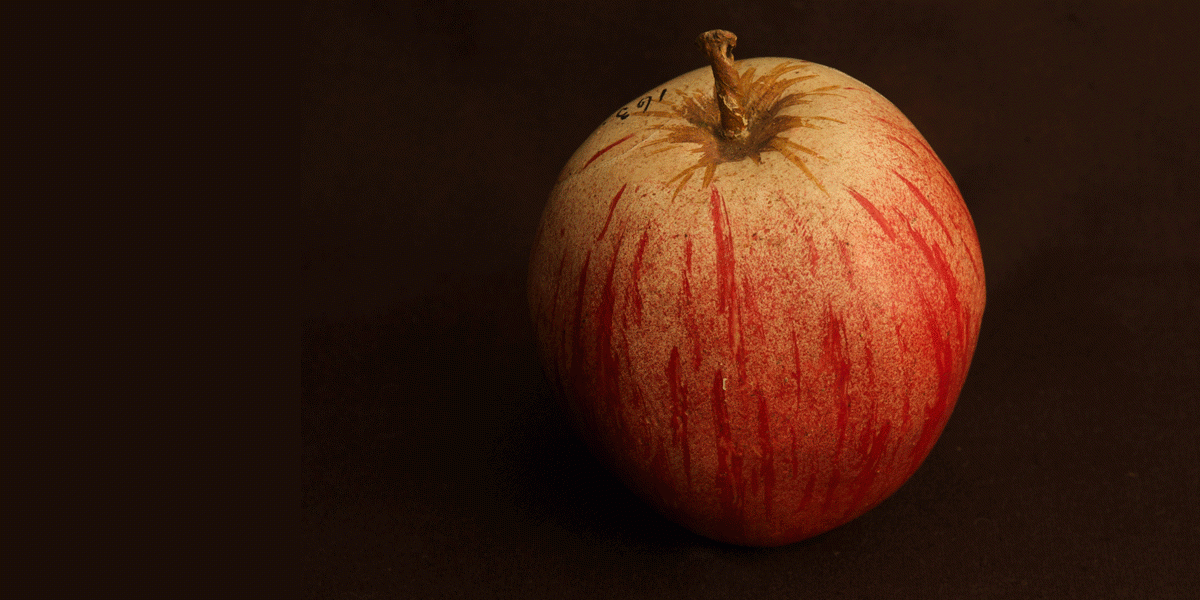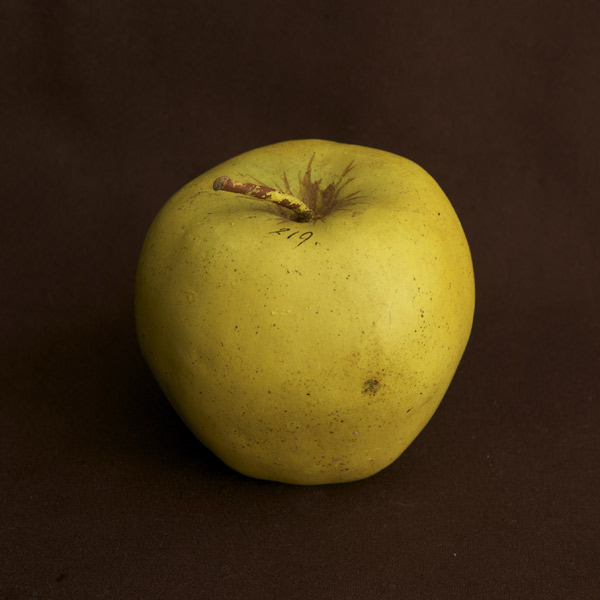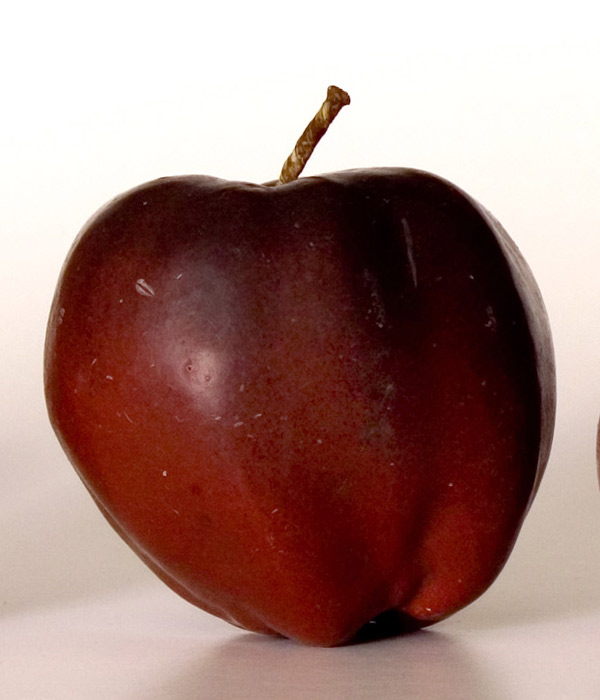Haunting images of long lost fruit


One of the Paul Atkins' photos from Imitation of Life.
For Halloween I spooked myself with a book about the ghosts of apples and pears. Dead ones. Types long gone.
It’s the work of Tony Kanellos, who is cultural collections manager and curator of the Santos Museum of Economic Botany in the Botanic Gardens of Adelaide.
The book, Imitation of life – a visual catalogue, was made with a lot of help from a pomologist called Heinrich Arnoldi. A pomologist is a fruit expert. Pomology was once a very popular science, but there are only about 200 accredited pomologists working on Earth today.
Arnoldi was 70 when he died in 1882. He sought to improve the quality of life by recording its diversity, and by his quiet science encourage the propagation of as many types of fruit as possible. He made a business of fruit delivery by subscription. His fruit was built to last. His company made exquisite copies of fruit – and fungi – from hand-painted, waxed and stuccoed papier-mâché, a secret technique he invented.
These remarkable artworks are not meant to be beautiful, but were built to be perfectly true examples of their type. Colour, shape, size, form and texture had to be scientifically accurate to tolerances and exactitude modern artisans have yet to equal. The sorts of specks and imperfections the 21st-century fruit consumer refuses to accept were all part of the picture to Arnoldi.
Dr Richard Schomburgk, director of the Botanic Gardens of Adelaide from 1865 to 1891, wanted a reference collection of fruits his fellow colonists should consider for import and propagation, and to help avoid misnaming types already described, named and planted here. Just months after his appointment, he was negotiating with his fellow countrymen in Germany to purchase a subscription of supplies of fruit from Heinrich Arnoldi and Company. This soon began to arrive in batches.
While Arnoldi died in 1882, his company continued its deliveries until the last in 1899. It produced replicas of 456 fruit varieties over 43 years, delivered in 76 instalments. Despite them being “lost” with the advent of modern monoculture, and hidden in storage for more than 50 years, 360 of these priceless exhibits – apples, pears, plums, peaches, and an apricot – survive in the Santos Museum of Economic Botany.
It is Kanellos we should thank for the restoration and study of this extremely rare exhibit.
Each of these perfect replica fruits took two years to make and approve. The book presents haunting Paul Atkins photographs of 225 apples and 161 pears. I counted six apples and two pears in the local Coles yesterday, and none of them looked like the fruits on these pages do.
My interest in apples and pears comes partly through my curiosity about cider and perry. While these drinks are in boomgate flood currently, most of them are simple sweet kiddylikker rotgut made from the juice of excess so-called “eating apples”, much of which is imported as frozen concentrate.
It’s typical of humans to name their most inbred, bland, industrially repeated fruit “eating”. In contrast, we should not forget the appellation, “drinking”.
With his Somerset cider background, my favourite Australian cider and perry man, Warwick Billings of Lobo at Mt Torrens, wails aloud about the dearth of old apple and pear strains which are essential for proper cider and perry.
Just as it tortures me, it drives him nuts to see this range of fruits, many of which died out long ago, while others are probably dying somewhere now.
“It’s a source of mass frustration – a mass of heritage that we haven’t looked after,” he says. “You can’t taste papier-mâché. Those flavours have gone forever. I can’t drive past an old orchard now without wanting to get out of the car and save them.”
Anybody with remnant apple or pear types in old orchards should contact Warwick – he needs quality fruit for his cider press. Imitation of life – a visual catalogue, may be a useful tool to name old types you don’t know. But I’ll be surprised if you find many. My feeling on spending an hour in these pages is one of grief for what I suspect is lost forever. If you have any doubts, take a wander into the Santos Museum of Economic Botany next time you’re in town, and visit the originals. They trigger that very exciting mixture of grief and joy at the appreciation of both extremes of humanity’s capacity for obvious commonsense.
In his foreword, Botanic Gardens director Stephen Forbes refers to your modern patented supermarket fruit by quoting John Seabrook writing in The New Yorker of an apple invented at the University of Michigan:
“As a piece of intellectual property – branded, patented and trademarked – (SweeTango) has more in common with the apple on my laptop than the one I used to carry in my lunchbox.”
While our society seems to have carefully got itself down to just a handful of horrid bland apples, Forbes points out that when the mapping of the apple genome was completed in 2010, 57,000 genes were identified, more than in any other known plant. With his typically understated assertion, he calls Kanellos’s story of Heinrich Arnoldi and his fruit “one that resonates with contemporary issues in biodiversity conservation and food security”.
No need to wait until Halloween. These beautiful ghosts will haunt you anytime.
Prof David Mabberely, the eminent botanist, historian and author of The Story of the Apple, will officially launch this profound edition at a Marble Hill picnic on November 17. Imitation of life – a visual catalogue will sell for $69 at the Diggers Garden Shop, behind the Museum of Economic Botany in the Botanic Gardens of Adelaide. Wakefield Press will distribute it through all good Australian bookstores.






